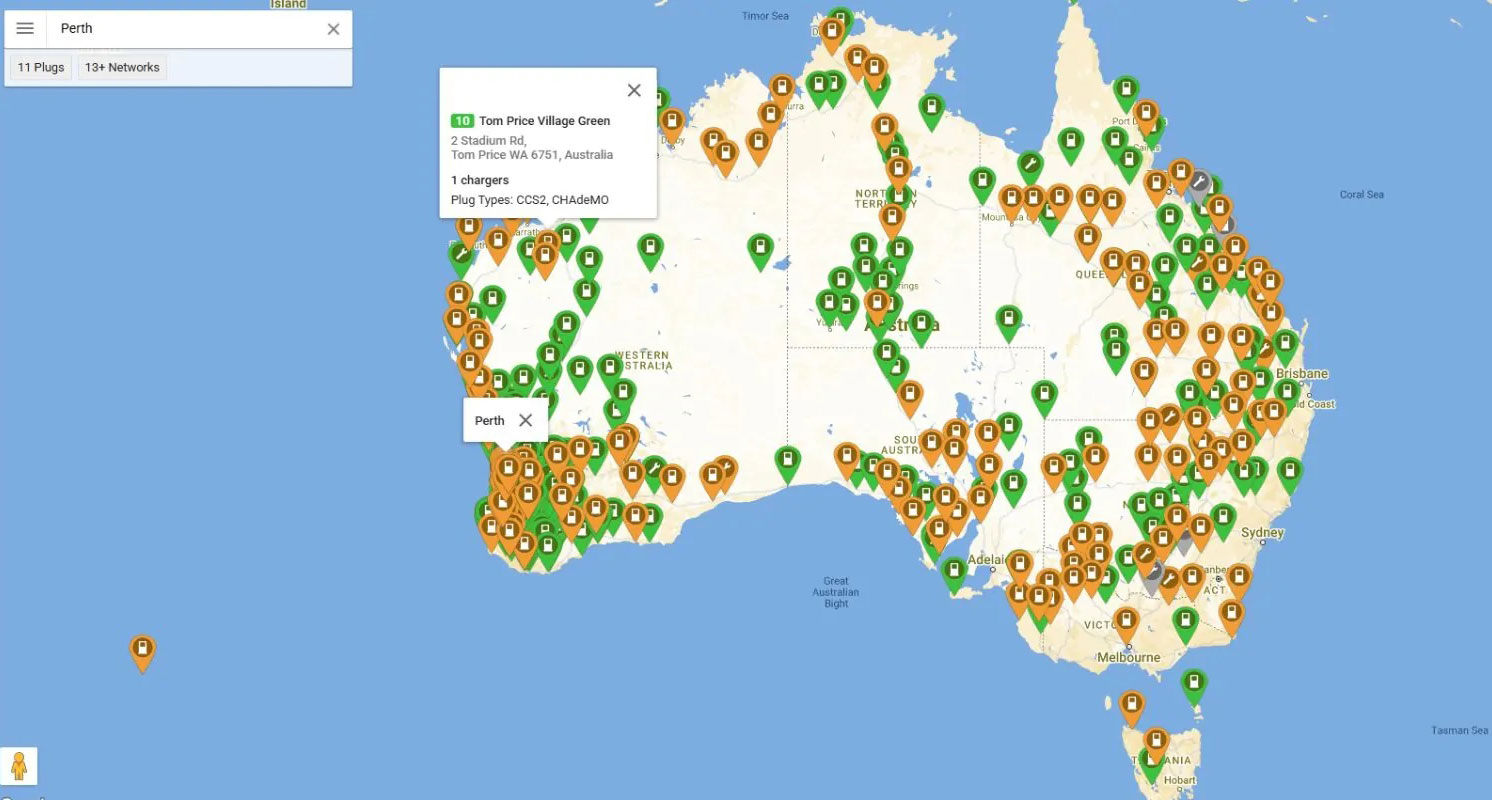
Australia’s shift to electric vehicles is well underway, but owning an EV still depends on one crucial factor: charging access. As governments, utilities and private operators accelerate investment, some capital cities stand out for the breadth of their charging networks, supportive policy settings and practical local initiatives that make everyday EV ownership more straightforward. This overview examines the capital cities leading the charge, explores what makes a city EV-friendly, and offers practical takeaways for drivers and decision-makers.
Why charging infrastructure matters
Charging availability influences purchase decisions, daily convenience and the feasibility of longer trips. An EV-friendly city delivers:
- A mix of charging speeds (from overnight home and workplace charging through to public fast and ultra-rapid chargers).
- Wide geographic coverage so drivers aren’t constrained to inner-city areas.
- Interoperable payment systems and clear signage.
- Policy settings-rebates, stamp duty exemptions, parking incentives-that reduce costs and friction.
- Integration with renewable energy and grid planning to ensure sustainable, resilient charging.
Leading EV-friendly capitals
- Melbourne, Victoria
Melbourne combines dense inner-city charging with growing coverage across middle and outer suburbs. Local councils and private providers have focused on fast-charging hubs at major shopping centres, transport interchanges and along arterial routes-supporting both daily commuting and occasional longer trips. Municipal programs have also encouraged workplace charging pilots and kerbside installations in areas with limited off-street parking. For residents, the practical benefit is a greater likelihood of finding a charger near home, work or retail precincts. - Sydney, New South Wales
As Australia’s largest city, Sydney has seen steady expansion of public chargers driven by state-level incentives and private investment. NSW has signalled policy support for EVs through fringe benefits and registration reforms, and metropolitan charging rollouts aim to balance inner-city density with suburban reach. Sydney’s strength is its emergence of commercial charging providers offering roaming access across networks, which simplifies payment and route planning for drivers who travel across the metropolitan area. - Brisbane, Queensland
Brisbane’s EV ecosystem benefits from state initiatives that prioritise intercity corridors and tourism routes, enabling confident long-distance travel across South East Queensland. The city has also seen local council programs that encourage charging at community facilities and business precincts, helping smaller enterprises offer EV-friendly services. For drivers in Brisbane, the combination of road‑trip-ready chargers and growing urban coverage makes EV ownership increasingly practical. - Adelaide, South Australia
Adelaide has a reputation for progressive renewable energy targets, and that ambition extends into EV charging strategy. The city has piloted public charging in strategic locations and promoted incentives for businesses to install chargers. Adelaide’s compact urban footprint means chargers tend to be accessible within reasonable distances, making it an attractive environment for drivers seeking predictable charging options and a lower likelihood of range anxiety in urban travel. - Perth, Western Australia
Perth’s EV network is growing through public-private partnerships and coordinated state planning. Attention has been placed on long-distance connectivity across the state, with fast chargers deployed along main routes to support regional travel. Local programs are also supporting workplace and destination charging to broaden access beyond inner-city suburbs. For Perth drivers, the priority has been linking urban and regional networks to open up longer journeys.
What makes a city genuinely EV-friendly
Beyond charger counts, several practical elements determine whether a city delivers a good EV experience:
- Charger mix and distribution: A healthy balance between slow (AC) chargers for home and workplace use and fast (DC) chargers for quick top-ups reduces bottlenecks.
- Reliability and maintenance: Operational uptime and rapid fault response are critical; a dense network is only useful when chargers work.
- Payment and roaming: Unified billing, clear pricing and network roaming reduce confusion and prevent stranded drivers.
- Parking and curbside policy: Cities that plan kerbside charging and prioritised EV parking help those without private driveways.
- Integration with renewables and storage: Aligning charging with solar, wind and battery storage reduces emissions and eases grid impacts during peak demand.
- Local incentives: Rebates, concessional parking and streamlined planning for charger installations lower the barriers to adoption.
Practical advice for prospective and new EV owners
- Home charging first: If you can install a home charger, it will cover the majority of daily needs-plan for a dedicated EVSE unit with an electrician.
- Know charging speeds: Level 2 chargers are ideal for overnight charging; DC fast chargers are for on-the-go top-ups. Use fast chargers sparingly to preserve battery health.
- Use apps and maps: Network apps provide realtime availability, pricing and payment options-essential for route planning and avoiding broken or occupied chargers.
- Consider workplace charging: Ask your employer about installing chargers or partnering with providers-workplace charging multiplies practical range.
- Plan for long trips: Map out DC fast-charger locations along major routes, and factor in charging time into travel plans.
Policy and industry trends to watch
- Greater network interoperability and standardised billing will make cross-network travel easier.
- Continued state and federal incentives will accelerate private investment in fast-charger corridors and urban kerbside solutions.
- Integration with distributed solar and grid services may allow EVs to stabilise local networks and reduce charging costs for drivers.
- Fleet electrification-public transport and commercial fleets-will expand charging hubs and normalise public charging use.
Conclusion
Australia’s major capitals are advancing at different speeds, but the trajectory is clear: charging networks are becoming more extensive, reliable and user-friendly. Melbourne, Sydney, Brisbane, Adelaide and Perth each have strengths-whether in dense urban coverage, long-distance corridor planning or policy support. For current and prospective EV owners, the most important considerations are access to dependable home and public charging, clarity around payment and interoperability, and an eye on local policies that reduce cost and complexity. As infrastructure and incentives mature, EV ownership in Australia will become increasingly straightforward across the nation’s capital cities.
FAQs
Q: Which Australian capital is best for EV ownership?
A: There’s no single “best” city-each capital has strengths. Inner-urban charging density tends to be highest in Melbourne and Sydney, while places like Brisbane and Perth place emphasis on regional corridors. Choose based on where you live, commute and travel.
Q: Do I need a home charger to own an EV?
A: You don’t strictly need one, but a home charger is the most convenient and cost-effective way to keep an EV charged for daily use. If you live in an apartment or have no off-street parking, look for local workplace and kerbside charging options.
Q: What’s the difference between AC and DC charging?
A: AC (Level 2) charging is slower and suits overnight home or workplace charging. DC fast charging provides much higher power for quicker top-ups during travel. Both have roles in a balanced network.
Q: Are public chargers reliable?
A: Reliability varies by network and location. Use apps that report realtime status, and favour locations with multiple chargers. City and network operators are improving maintenance regimes, but occasional outages still occur.
Q: How do I pay for public charging?
A: Payment methods differ-some networks use apps, RFID cards, or contactless payments. Roaming agreements between providers are becoming more common, simplifying cross-network travel.
Q: Will my electricity bill skyrocket if I charge an EV?
A: Not necessarily. Charging overnight during off-peak tariffs can keep costs low. Smart charging and managed tariffs can further reduce costs, and integrating household solar can offset charging demand.
About EV Evolution
EV Evolution is the leading online platform dedicated to Australian electric vehicle owners and enthusiasts. We foster a vibrant community, delivering essential EV news and insights, and enhancing user engagement through our innovative, AI-powered chatbot for dynamic discussions. Our mission is to empower Australian electric vehicle owners and enthusiasts by fostering a vibrant, AI-driven online community that connects, informs, and advances the nation’s electric vehicle landscape: Top EV-Friendly Capital Cities in Australia: Where Charging Is Easiest and Most Accessible




